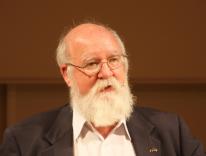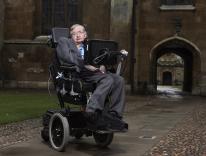In twenty-first-century America, science has become so politicized that to speak openly of “supporting science” likely marks you as a Democrat. Today, 97 percent of climate scientists agree that climate change has been caused by human beings, while major scientific organizations work openly against social evils like racism, misogyny, and poverty. But despite its recent record, science has not always aligned so well with modern values of equality and the common good. The history of science includes not only racial hierarchies, but also Western cultural supremacy, the militarization of scientific knowledge, and the subordination of scientific research to corporate profits.
In the mid-nineteenth century, racist ideas pervaded the scientific, philosophical, and religious worlds. Atheists and religious alike owned enslaved people, as did prominent scientists, politicians, and philosophers. While revolutions raged in Europe, the industrial revolution brought remarkable advances in technology and wealth, largely on the backs of the enslaved. Into this social context Charles Darwin introduced his theory of “evolution by means of natural selection” in 1859. At the time of publication, most scholars still believed in the immediate creation of all human life by God or by Nature. Some, like Darwin, believed that all humans were one species, an idea called monogenism. Others, like David Hume, Louis Agassiz, and Josiah Nott, believed that humans were created as multiple species with different levels of intelligence, a theory called polygenism. While most abolitionists were monogenists and most pro-slavery advocates were polygenists, there were exceptions. Plenty of people who believed in monogenism (including many abolitionists) held that white Europeans carried the ideal form of humanity, and a few who believed in polygenism were in fact abolitionists themselves, arguing that the different human species were all equal. In the final line of Origin of Species, Darwin himself hammered the first nail in the coffin of polygenistic science with a lofty vision of universal common ancestry:
There is grandeur in this view of life, with its several powers, having been originally breathed by the Creator into a few forms or into one; and that, whilst this planet has gone cycling on according to the fixed law of gravity, from so simple a beginning endless forms most beautiful and most wonderful have been, and are being, evolved.
Despite some inaccuracies and fierce opposition, Darwin’s blend of novel hypotheses, expansive taxonomic work, and good rhetoric transformed the scientific world within a few decades. By the late-nineteenth century, only a few supporters of polygenism remained, but the philosophical, theological, and scientific racism that had made polygenism so popular was soon drawing people to a new cause: eugenics.
“Eugenics” (Greek for “well bred”) was given its name in 1883 by Darwin’s cousin Francis Galton, the creator of the IQ test. Galton gained widespread support for eugenics by arguing, theologically, that eugenics was a proper application of the Gospel parable of the talents, while also arguing, culturally, that Darwin’s idea of natural selection helped explain why white European men had conquered the world and were thus the most advanced examples of humanity. This intermingling of racism, science, philosophy, theology, and politics laid a terrible groundwork for mainstream scientific thought in the late-nineteenth and early-twentieth centuries. For Galton and most of the educated elite, the program of eugenics would allow humans to do intentionally what nature does randomly: favoring the most biologically capable, the “fittest,” and gradually ridding the world of the unfit. Between 1883 and 1939—the year World War II began—eugenic philosophies, theologies, and laws spread like wildfire.
Before the rise of Nazi Germany, the most potent application of eugenics was in the United States, whose ruling class held tightly to racism, xenophobia, and cultural progressivism. Eugenics in the United States included campaigns to encourage the reproduction of the fittest human specimens, celebrations of the fittest babies, and efforts to determine, via Galton’s IQ test and other measures, the “most fit humans.” But it also included forced-sterilization and anti-miscegenation laws, forced birth control, forced abortions, concentration camps, and unethical scientific experiments on black and other nonwhite communities.
Beyond the United States, eugenics played into the hands of powerful people with sinister agendas. In Canada and Mexico, anti-indigenous biases determined the nature of most eugenic laws. In South Africa, Tanzania, Namibia, Kenya, Rwanda, and Burundi, anti-black and anti-indigenous racism motivated both sterilization and anti-miscegenation laws, as well as death camps. In most of Europe, as well as Russia, China, Iran, Australia, and New Zealand, the eugenics movement channeled long-established hostility to Jews, Africans, indigenous peoples, women, and immigrants.
In all these countries, including the United States, people with disabilities and the poor were among the first to be sterilized, silenced, or killed. Thousands of scientific experiments were performed on people against their wills, and countless laws inspired by eugenics were passed in the name of scientific progress. The genocidal actions of Nazi Germany and all German-controlled countries were uniquely horrific in their implementation of eugenic ideas, but Hitler’s program was largely inspired by the language and laws of the American eugenics movement.
While eugenics spread so quickly because of its standing as an accepted application of a scientific theory, it’s important to remember that Christians played a large role in the dissemination of eugenics. Galton and many others used explicitly theological language to argue for eugenics from the beginning. As Christine Rosen writes in Preaching Eugenics, “one of the largest standing committees of the American Eugenics Society [in the first three decades of the twentieth century] was the Committee on Cooperation with Clergymen.” In fact, clergy of many religious traditions joined in the cause, writing, preaching, and lecturing widely in support of eugenics.
Anti-modernist Catholics were one notable exception to this. Together with fundamentalist Protestants, most Catholics opposed both evolution and eugenics. Eugenics was largely supported by moderate and liberal Christians who embraced science because they believed it was on the side of social progress. The same people who supported some variety of eugenics often championed progressive political causes. Such figures included Helen Keller, Winston Churchill, Teddy Roosevelt, and (as I’ve previously argued here) Pierre Teilhard de Chardin. Some eugenics supporters believed all peoples (though not necessarily all people) were equal (e.g., W.E.B. DuBois), but most believed that those of non-European descent were all inferior to whites.
In short, if you accepted Darwin’s evolutionary theory in the early twentieth century, you probably also supported eugenics. Pro-science progressives embraced both, while conservatives, including the Vatican, rejected both. Very few rejected one but not the other.
Things changed quickly after the war. Public support of eugenics plummeted after Nazi Germany’s crimes were revealed. While many scientists continued to argue against the equality of all humans—protesting en masse, for example, against the 1950 UNESCO statement on human rights—the tide of public opinion had turned. At the same time, the Catholic Church’s position on evolution was beginning to change. Pius XII’s Humani generis (1950) opened the church to discussion of evolutionary theory; a decade later Vatican II opened the church to modern science in general. Gaudium et spes balanced both the theological and the scientific pursuits of truth through the doctrine, declared at the Fifth Lateran Council and reaffirmed at the First Vatican Council, that “truth cannot contradict truth”:
Therefore if methodical investigation within every branch of learning is carried out in a genuinely scientific manner and in accord with moral norms, it never truly conflicts with faith, for earthly matters and the concerns of faith derive from the same God. Indeed whoever labors to penetrate the secrets of reality with a humble and steady mind, even though he is unaware of the fact, is nevertheless being led by the hand of God, who holds all things in existence, and gives them their identity. Consequently, we cannot but deplore certain habits of mind, which are sometimes found too among Christians, which do not sufficiently attend to the rightful independence of science and which, from the arguments and controversies they spark, lead many minds to conclude that faith and science are mutually opposed (Gaudium et spes, 36).
Thus, in the latter half of the twentieth century, Roman Catholicism became the first and largest Christian community to hold together a progressive acceptance of science with an insistence on universal human equality and dignity, from conception until natural death.
In the half-century since Vatican II, evolutionary science has continued to develop and is now the basis for several scientific disciplines. One of these, the science of genetics, has confirmed the thesis that all humans alive today are part of a single species. The 2001 publication of the human genome noted that “any two individuals are more than 99.9 percent identical in sequence, which means that all the glorious differences among individuals in our species that can be attributed to genes falls in a mere 0.1 percent of the sequence.” Of this 0.1 percent, a 2004 study showed that “87.6 percent of the total modern human genetic diversity is accounted for by the differences between individuals” of a single population, and “only 9.2 percent between continents.” In view of these findings, the authors of the study “see no reason to assume that ‘races’ represent any units of relevance for understanding human genetic history.”
It should be a point of pride among Catholics that the church came to accept evolutionary theory after decades of rejecting the idea. This change put the church in a better position to offer scientists moral guidance. It has also allowed the church to produce theologians who are comfortable with science and scientists who are comfortable with theology. Meanwhile, other Christian communities—and Evangelicals in particular—have continued to struggle with hostility toward science.
It is possible, of course, to oppose racism without subscribing to, or knowing anything about, the theory of evolution. Many holy women and men saw the theological necessity for the abolition of slavery long before the Human Genome Project. But the fact that modern science continues to affirm not only the common ancestry of humanity but also the evolutionary interconnectedness of all life offers significant support to contemporary theological arguments against racial hierarchies. The church may not need modern genetics to make its case for human equality, but good theology has always been responsive to the discoveries of the natural sciences. It’s worth noting that the church wavered far more on the equal dignity of all human beings before it began to accept evolutionary theory in the 1950s than it has since. The nearly universal scientific consensus both that all human beings share a common ancestry and that 99.9 percent of their DNA is the same has helped the twenty-first-century church to develop a robust ethic of universal human dignity—and to begin building an ethic of the dignity of all life on earth.
Please email comments to [email protected] and join the conversation on our Facebook page.
Previous Story
The Importance of Papal Diplomacy
Next Story
The Poetry of Sam Menashe

